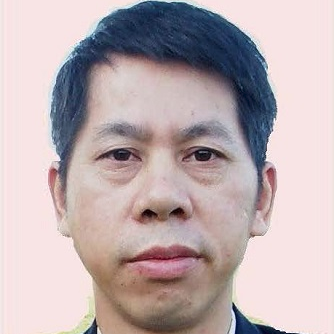Bio- and Nano-Materials and Their Interfaces
A special issue of International Journal of Molecular Sciences (ISSN 1422-0067). This special issue belongs to the section "Materials Science".
Deadline for manuscript submissions: closed (30 April 2019) | Viewed by 9539
Special Issue Editors
Interests: biomechanics; biomaterials; nanomaterials; computational mechanics; composite materials;
Special Issues, Collections and Topics in MDPI journals
Special Issue Information
Dear Colleagues,
This Special Issue entitled “Bio- and Nano-Materials and Their Interfaces” will cover various aspects of biomaterials, biological systems, nanoscale materials and structures, and their interfaces. In recent years, bio- and nano-materials and their interface have attracted intense research efforts from a wide range of areas such as material science, physics, mechanics and biomimetics and engineering. The biological materials (e.g., bone, nacre, teeth, wood, DNA) and nanomaterials (e.g., graphene and carbon nanotube) usually have desired performance and functions. Serving a source of inspiration, the structure-property-function relations of biological materials have already guided the design of novel materials with improved properties. Inspired by the biological materials, responsive materials, artificial muscles, stretchable and integratable electronics and sensors with comprehensive properties and functions have been designed and realized through the assembly of nanotube, graphene and nanowires. This Special Issue will cover some of the recent significant advances in the field of bio- and nano-materials. In particular, this issue will discuss the design, fabrication, property characterization, and modeling of bio- and nanomaterials, as well as their applications in various fields, such as mechanical and biomedical engineering. Research and review articles focusing on the above-mentioned fields are welcome.
Prof. Dr. Qinghua Qin
Dr. Jianshan Wang
Guest Editors
Manuscript Submission Information
Manuscripts should be submitted online at www.mdpi.com by registering and logging in to this website. Once you are registered, click here to go to the submission form. Manuscripts can be submitted until the deadline. All submissions that pass pre-check are peer-reviewed. Accepted papers will be published continuously in the journal (as soon as accepted) and will be listed together on the special issue website. Research articles, review articles as well as short communications are invited. For planned papers, a title and short abstract (about 100 words) can be sent to the Editorial Office for announcement on this website.
Submitted manuscripts should not have been published previously, nor be under consideration for publication elsewhere (except conference proceedings papers). All manuscripts are thoroughly refereed through a single-blind peer-review process. A guide for authors and other relevant information for submission of manuscripts is available on the Instructions for Authors page. International Journal of Molecular Sciences is an international peer-reviewed open access semimonthly journal published by MDPI.
Please visit the Instructions for Authors page before submitting a manuscript. There is an Article Processing Charge (APC) for publication in this open access journal. For details about the APC please see here. Submitted papers should be well formatted and use good English. Authors may use MDPI's English editing service prior to publication or during author revisions.
Keywords
- biological material
- biomimetics
- nanomaterial
- property characterization
- modeling







